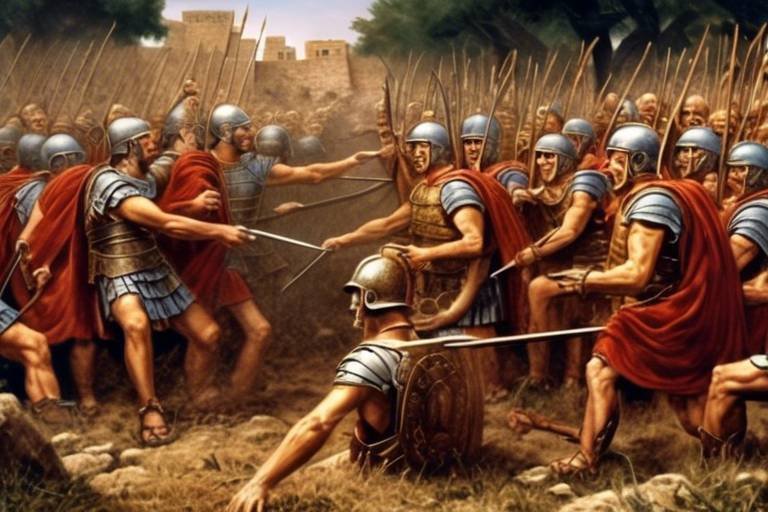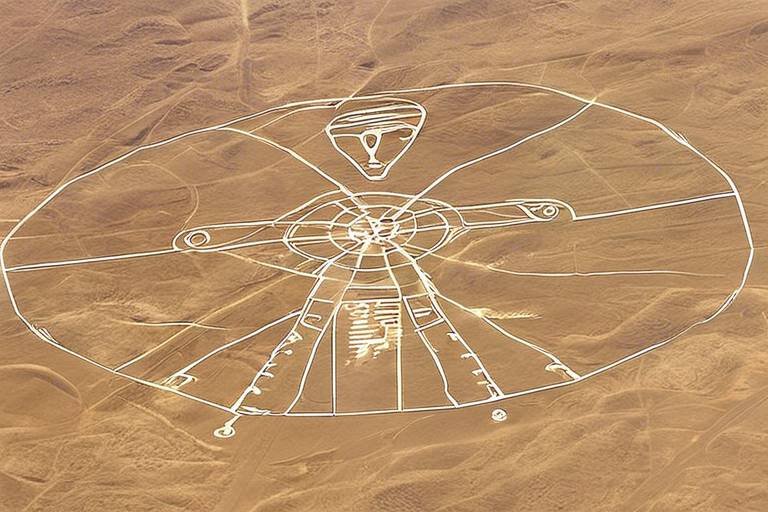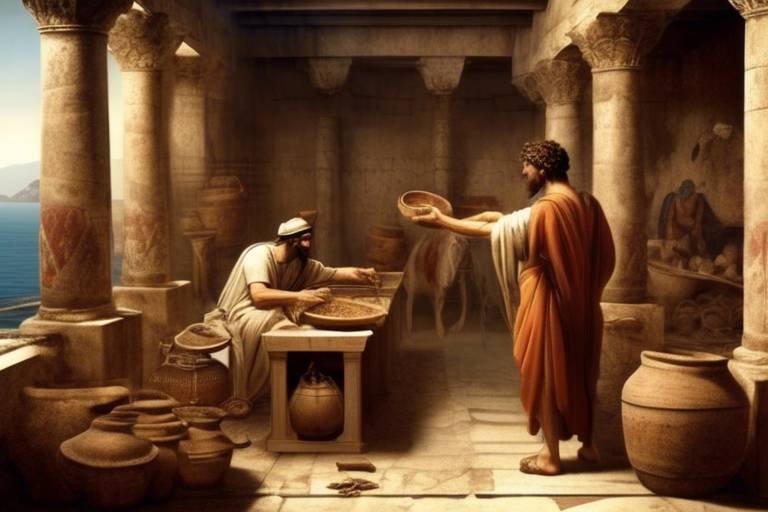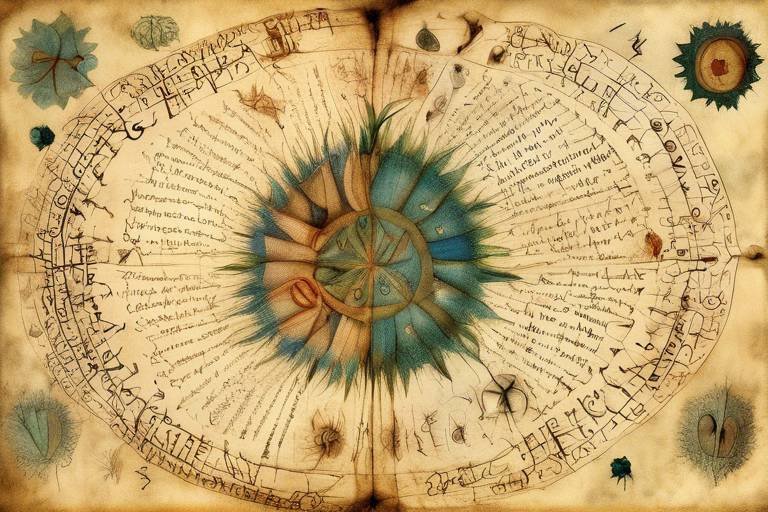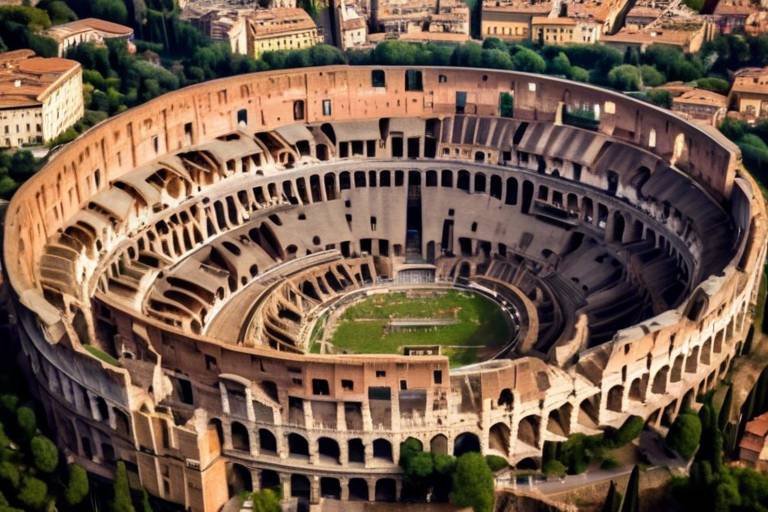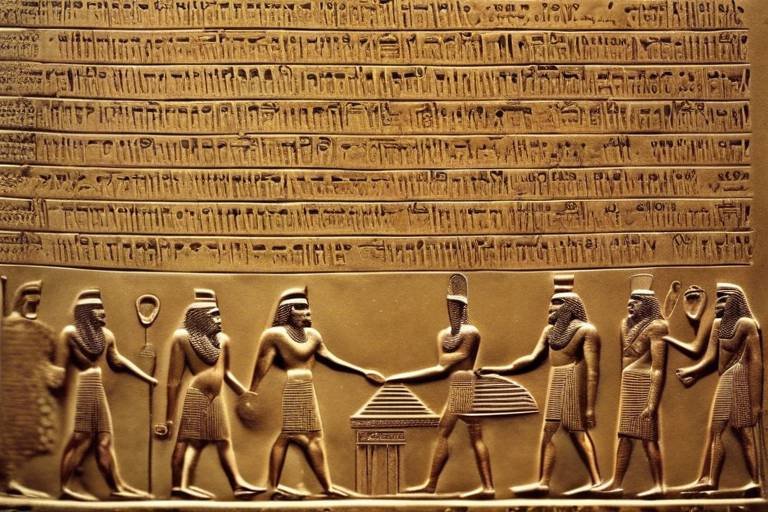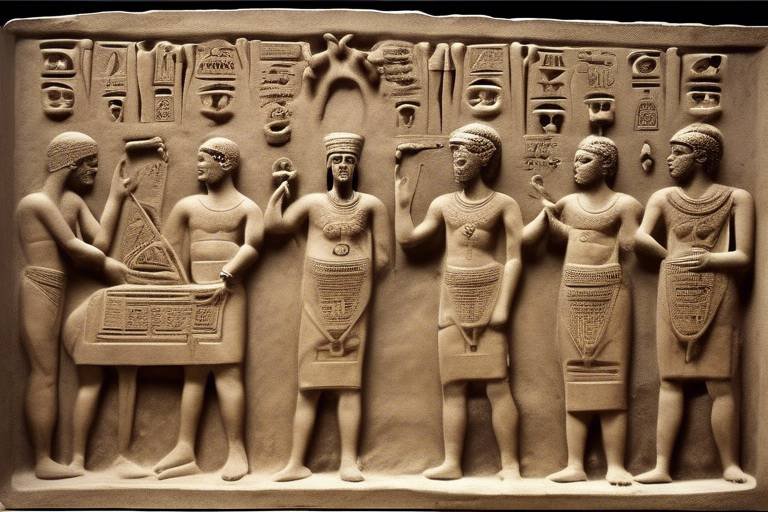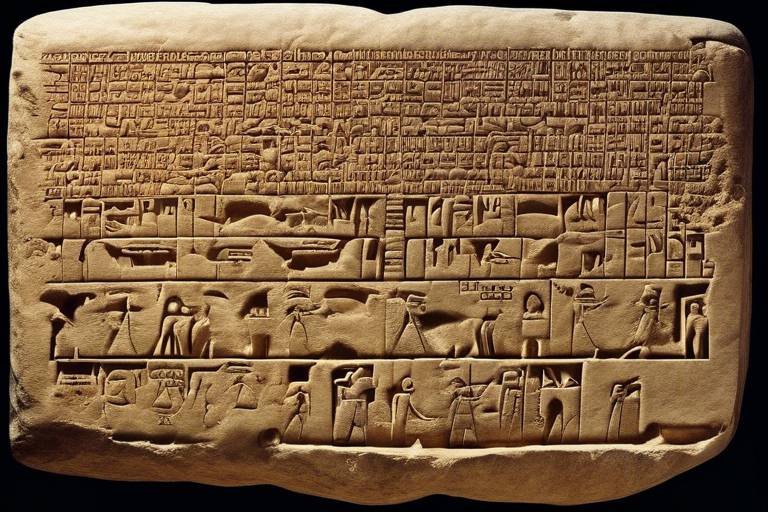The Discovery of the Ancient Roman Military Strategies
Have you ever wondered how the ancient Romans achieved their military dominance? The discovery of the ancient Roman military strategies unveils a world of innovative tactics, formidable leadership, and advanced weaponry that propelled the Roman legions to unparalleled success on the battlefield. This exploration delves into the intricacies of Roman military prowess, shedding light on the enduring legacy of one of history's most powerful armies.

Overview of Roman Military Tactics
Topics to be discussed in the article include the tactics, formations, weapons, and leadership strategies employed by the ancient Roman military. This exploration sheds light on the innovative and influential methods used by one of history's most formidable armies.
Roman military tactics encompassed a range of strategies that were crucial to the success of the Roman legions in battle. The manipular formation, a key tactic, allowed for flexibility and rapid response on the battlefield. This formation consisted of smaller units called maniples, each with its own strengths and abilities, working together as a cohesive force.
Another notable tactic was the testudo formation, where soldiers would interlock their shields to form a protective shell against missile attacks. This formation provided cover for soldiers advancing towards enemy positions or during siege warfare, showcasing the Romans' ingenuity in defensive strategies.
Furthermore, the Romans utilized sophisticated siege engines such as ballistae and catapults to breach enemy fortifications and support ground troops. These weapons were instrumental in sieges and open-field battles, demonstrating the Roman military's mastery of both offensive and defensive warfare.
Overall, the combination of these tactics, formations, and weapons highlighted the strategic prowess and adaptability of the Roman legions in various combat scenarios.

Leadership in the Roman Army
Leadership in the Roman army was a highly structured and hierarchical system that played a crucial role in the success of the legions. At the top of the hierarchy were the senior officers such as the legatus, who commanded the legion, and the tribunus laticlavius, who was second in command. These officers were responsible for making strategic decisions and overseeing the legion's overall operations.
Below the senior officers were the centurions, who led individual centuries comprising around 80 men. Centurions were respected figures within the army, known for their leadership skills and combat prowess. They were responsible for training and disciplining their men, as well as leading them in battle.
The centurions were further divided into different ranks, with the primus pilus being the most senior centurion in a legion and holding significant influence. Centurions played a crucial role in maintaining discipline and morale among the troops, ensuring that orders were carried out efficiently on the battlefield.
Additionally, the Roman army had a system of non-commissioned officers known as optiones who assisted the centurions in their duties. These optiones were typically experienced soldiers who were entrusted with important tasks and helped maintain order within the ranks.
The leadership structure of the Roman army emphasized discipline and obedience, with clear chains of command and strict adherence to orders. This hierarchical system instilled a sense of loyalty and cohesion among the troops, ensuring that the legion operated as a unified and effective fighting force.

Weapons and Armor of the Roman Legions
The Roman legions were renowned for their formidable weapons and armor, meticulously crafted to ensure the soldiers' efficiency and protection on the battlefield. One of the most iconic weapons of the Roman soldiers was the gladius sword, a short sword designed for close combat. Its effectiveness in thrusting and slashing made it a deadly weapon in the hands of a skilled legionary. Paired with the gladius, the pilum javelin was a throwing spear used to disrupt enemy formations before engaging in melee combat. The design of the pilum allowed it to penetrate shields and armor, causing chaos among enemy ranks.
In addition to their weapons, Roman soldiers were equipped with lorica segmentata armor, a type of segmented armor made from iron plates. This innovative design provided excellent protection while allowing for flexibility and ease of movement in battle. The lorica segmentata was a symbol of Roman military might and engineering prowess, showcasing their commitment to outfitting their troops with the best available gear.
The Roman legions also utilized scutum shields, large rectangular shields made of wood and covered with leather. These shields were crucial for forming the famous testudo formation, a defensive tactic where soldiers interlocked their shields to create a protective shell against enemy projectiles. The scutum shield was a versatile tool in both defense and offense, providing Roman soldiers with a tactical advantage on the battlefield.

Strategic Planning and Logistics
Strategic planning and logistics were fundamental aspects of the ancient Roman military's success on the battlefield. The Romans were not only skilled in combat tactics but also excelled in the organization and management of their military campaigns. One key element of their strategic planning was the establishment of efficient supply lines to ensure that troops were adequately equipped and provisioned for extended campaigns. This meticulous attention to logistics allowed the Roman legions to maintain their strength and effectiveness far from their home base.
Furthermore, the Romans were adept at constructing fortifications and establishing communication networks to support their military operations. These fortifications, such as Hadrian's Wall in Britain, served as strategic barriers to control movement and protect Roman territories. Communication networks, including roads and signal systems, enabled swift transmission of orders and information across vast distances, facilitating coordination among different units of the army.
Moreover, the Romans employed sophisticated methods of resource management and allocation to ensure the sustainability of their military endeavors. They strategically positioned depots and granaries along their supply routes to stockpile essential provisions and equipment. This careful planning minimized the risk of shortages and logistical disruptions, allowing the Roman army to maintain its operational readiness and mobility.
Overall, the strategic planning and logistics of the ancient Roman military were integral to their overall success and dominance on the battlefield. By prioritizing organization, supply chain management, and infrastructure development, the Romans established a formidable military machine that could effectively project power and conquer vast territories.

Influence of Roman Military Strategies
Topics to be discussed in the article include the tactics, formations, weapons, and leadership strategies employed by the ancient Roman military. This exploration sheds light on the innovative and influential methods used by one of history's most formidable armies.
Roman military tactics encompassed a range of strategies, including the manipular formation, the testudo formation, and the use of siege engines. These tactics were crucial to the success of the Roman legions in battle.
Leadership in the Roman army was hierarchical, with officers such as centurions and tribunes playing key roles in commanding troops. The leadership structure and discipline were essential components of the Roman military's effectiveness.
The Roman legions were equipped with a variety of weapons and armor, including the gladius sword, pilum javelin, and lorica segmentata armor. These arms were carefully designed to maximize the effectiveness of Roman soldiers in combat.
Roman military success was not only due to battlefield tactics but also meticulous strategic planning and logistics. Supply lines, fortifications, and communication networks were essential for the Roman army's operations.
The military strategies of ancient Rome have had a lasting impact on warfare and continue to be studied and emulated today. The Roman approach to organization, discipline, and tactics remains a model for modern military institutions.
The Roman military was known for its ability to adapt to different terrains and enemies, as well as its innovative engineering solutions. This flexibility and ingenuity were key factors in the Roman army's long-term success.
The legacy of Roman military thought extends beyond the battlefield to influence areas such as leadership, strategy, and organization. The principles developed by the ancient Romans continue to be relevant in contemporary military theory and practice.
Recent archaeological discoveries have provided new insights into Roman military strategies, offering a deeper understanding of how the legions operated. These findings contribute to our knowledge of ancient warfare and the Roman Empire's military prowess.
Stay tuned for answers to common questions about ancient Roman military strategies and their impact on history.

Adaptability and Innovation in Roman Warfare
The adaptability and innovation displayed by the ancient Roman military in warfare set them apart as a formidable force in history. The Romans were not only skilled in traditional battle tactics but also excelled in their ability to adjust strategies according to the terrain and the tactics of their adversaries. This flexibility allowed them to effectively respond to various challenges on the battlefield, giving them a significant advantage over their enemies.
One of the key aspects of Roman adaptability was their engineering prowess. The Romans were adept at constructing innovative siege engines and fortifications, enabling them to lay siege to enemy cities and fortresses with great success. Their ability to quickly build and dismantle structures on the battlefield showcased their strategic thinking and adaptability in the face of different military scenarios.
Moreover, the Roman military's organizational structure played a crucial role in their adaptability. The division of legions into smaller cohorts and centuries allowed for greater maneuverability and coordination during battles. This hierarchical system facilitated quick decision-making and efficient communication, essential elements in adapting to changing circumstances on the battlefield.
Additionally, the Romans were skilled at incorporating new technologies and tactics into their military strategies. They were quick to learn from their enemies and allies, integrating effective methods into their own warfare techniques. This openness to innovation and willingness to experiment with new ideas contributed to the Roman military's continued success and dominance on the battlefield.
Overall, the adaptability and innovation displayed by the ancient Roman military in warfare exemplify their strategic acumen and ability to overcome challenges through creative problem-solving. Their legacy of flexibility and ingenuity continues to inspire military thinkers and strategists to this day, highlighting the enduring relevance of Roman military tactics and innovation in contemporary warfare.

Legacy of Roman Military Thought
The legacy of Roman military thought is a rich tapestry that extends far beyond the battlefield. The strategic and organizational principles developed by the ancient Romans have left an indelible mark on military theory and practice throughout history. Their emphasis on discipline, hierarchy, and adaptability continues to influence modern military institutions worldwide.
One of the key aspects of Roman military thought is the concept of leadership. The hierarchical structure of the Roman army, with officers such as centurions and tribunes, served as a model for future military organizations. The emphasis on strong leadership and clear command structures remains a cornerstone of effective military operations to this day.
Additionally, the Romans were pioneers in strategic planning and logistics. Their meticulous attention to detail in supply lines, fortifications, and communication networks set a standard for military operations that has stood the test of time. The importance of careful planning and preparation in achieving military success is a lesson that continues to be heeded by military strategists worldwide.
Moreover, the adaptability and innovation displayed by the Roman military have also left a lasting legacy. From engineering marvels such as aqueducts and roads to innovative battlefield tactics, the Romans were constantly evolving to meet the challenges of warfare. Their ability to adapt to different terrains and enemies set them apart as a formidable force in ancient times.
Overall, the legacy of Roman military thought serves as a testament to the enduring influence of ancient Rome on the art of war. By studying and understanding the strategies and principles developed by the Romans, we gain valuable insights into the complexities of military operations and the enduring impact of history on contemporary warfare.

Archaeological Discoveries and Insights
Recent archaeological excavations have unearthed fascinating insights into the military strategies employed by the ancient Romans. These discoveries provide a glimpse into the daily lives of Roman soldiers and the advanced tactics they utilized on the battlefield. One remarkable find includes the uncovering of well-preserved Roman fortifications, offering a detailed look at the defensive structures used to protect Roman camps.
Additionally, excavations have revealed intricate details about the weaponry and armor used by Roman legions. The discovery of perfectly preserved gladius swords and pilum javelins showcases the craftsmanship and effectiveness of Roman military equipment. These findings not only shed light on the armaments of the time but also highlight the strategic prowess of Roman commanders in outfitting their troops.
Furthermore, archaeological studies have uncovered evidence of the logistical infrastructure that supported Roman military campaigns. From the remnants of supply depots to the traces of ancient roads and communication networks, these discoveries paint a vivid picture of the organizational skills required to sustain the vast Roman army across long distances.
One particularly intriguing find is the discovery of ancient battlefields where Roman forces clashed with their adversaries. The analysis of these sites provides valuable insights into the tactics employed by both sides, offering a glimpse into the fierce and calculated nature of Roman warfare. By studying the remnants of these battles, historians can piece together the strategies and maneuvers that shaped the outcome of key conflicts.
In conclusion, archaeological discoveries continue to deepen our understanding of the ancient Roman military machine. By unearthing artifacts, fortifications, and battlefields, researchers gain valuable insights into the tactics, logistics, and leadership that propelled the Roman legions to victory. These discoveries not only enrich our knowledge of history but also serve as a testament to the enduring legacy of Roman military prowess.
Frequently Asked Questions
- What were the key formations used by the ancient Roman military?
The ancient Roman military utilized various formations such as the manipular formation, which was a flexible arrangement of troops, and the testudo formation, a defensive tactic where soldiers formed a shield wall to protect themselves from projectiles.
- What weapons did the Roman legions use in battle?
The Roman legions were equipped with a range of weapons including the gladius sword, a short stabbing sword, the pilum javelin for throwing at enemies, and the lorica segmentata armor for protection in combat.
- How did leadership function within the Roman army?
Leadership in the Roman army was structured hierarchically with officers like centurions and tribunes holding key command positions. This system of leadership was crucial for maintaining discipline and efficiency within the legions.
- What was the influence of Roman military strategies on modern warfare?
The military strategies developed by the ancient Romans have had a lasting impact on modern warfare, influencing areas such as organization, discipline, and tactics. Many contemporary military institutions still study and draw inspiration from Roman military tactics.
- What role did strategic planning play in the success of the Roman military?
Strategic planning and logistics were essential components of Roman military success. Factors such as supply lines, fortifications, and communication networks were meticulously planned to ensure the effectiveness of the Roman legions in battle.

